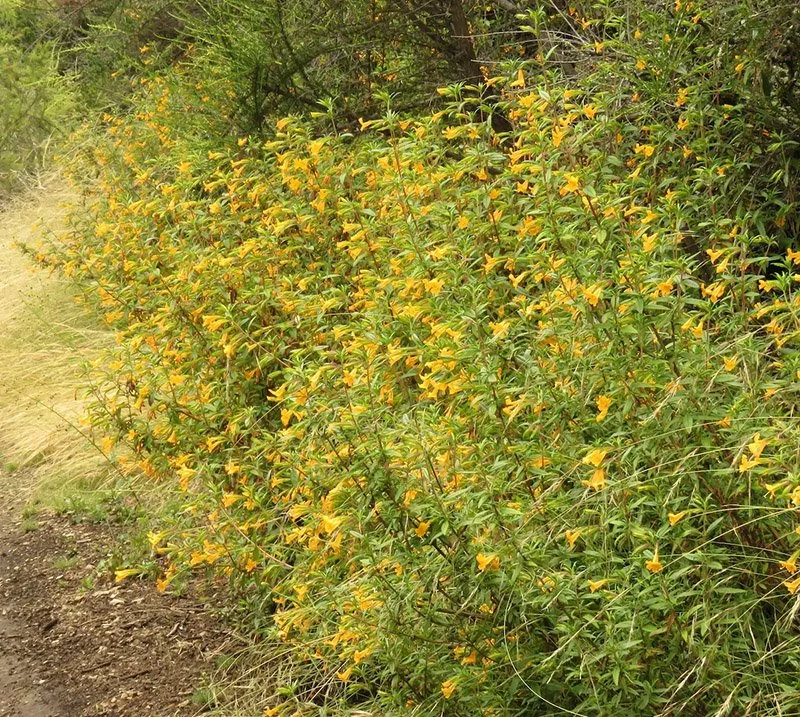Take Your Native Garden to the Next Level with Greywater
As seen in Dwell Magazine.
Surya, Poonam & Ali. Photo: Peyton Fulford/Dwell Magazine
“Real Riparian” Swale (Surya’s garden)
A planted swale is a force in the garden, bringing whimsy and functionality at the same time. But as much as it can channel and infiltrate the rain, it lacks the steady moisture of a true riparian environment. A swale might look like a natural stream, but most of the time it remains dry. That’s where greywater comes in.
The Spring Effect
When our friends’ son Surya (as told in Dwell magazine) was selecting plants for his garden, he discovered he would need a water source for his prized Bush Monkey Flower, among other specimens of riparian persuasion. And, waste not want not, greywater provided the ideal solution: a regular flow of water, like an underground spring, that would keep moisture present in the creek-like environment. He was now able to plant water-loving riparian natives that would thrive with no additional irrigation. And with the help of design studio and nursery Hardy Californians, that is exactly what he did.
Streamside Standouts
Many of the plants Surya selected thrive in damp soils, making them ideal for areas directly adjacent to greywater sources. Water-loving highlights from the garden include:
Seep Monkey Flower (Erythranthe guttata)
This fast-spreading flowering shrub adds a spectacular pop of color to a garden with well-watered soil. It will thrive near greywater basins that receive plenty of water, drinking up what it can and filtering the rest through it’s extensive root system. A food powerhouse for bees, butterflies and moths, Monkey Flower will bring life to the garden and take as much water as you provide.
Mugwort (Artemisia douglasiana)
Often grown for it’s pleasant aroma and textured foliage, Mugwort can be found streamside in nature and thrives in a well-watered garden. This highly adaptable plant loves sun and water, but will tolerate partial shade and spells of dry conditions. Mugwort will show beautifully year-round but it’s more than a decoration – this powerful plant hosts around 28 species of butterflies. It is also used for medicinal purposes, erosion control and soil restoration.
Yerba Mansa (Anemopsis californica)
Known for thriving in damp soil, Yerba Mansa will take as much water as you can throw at it. Spectacular white blooms appear in Spring and last through Summer, eventually changing to intense bursts of red in the Fall before going dormant until late Winter. A plant of striking visual contrasts, it also fills the garden with a pleasant aroma and the buzz of pollinators feasting on it’s delicate flowers.
California: It’s NOT a Desert
As much as California Native plants are known for drought tolerance, we are only scratching the surface of what can be done with them in damp soils. Stay tuned for coverage on riparian trees that can convert a scorching, South facing yard into a creekside oasis, and the role rainwater harvesting can play in maintaining a river-like ecosystem at home.
Drop Us a Line
If you’ve made it this far, you might want to find out more. Drop us a line any time to explore the possibilities of greywater and rainwater in your garden.




